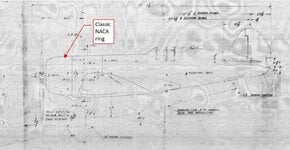_PabloSniper_
Airman
- 41
- Sep 25, 2024
Hello everyone!
I believe everyone here should know the history of the P-36.
What if Curtiss had insisted a little more on its development?
When I think of the development of the P-36, I imagine this.
A P-40N with an R-2600 radial. (Same as the XF6F-1 Hellcat prototype, the B-25 and the TBF Avenger)

The R-2600 is about 600 pounds heavier than a V-1710, but I think with the right tuning it could have extended the life of the Curtiss fighters.
And since the P-40N had a larger tail than the P-36, perhaps it would be possible to balance the weight.
I'm not sure how much the V-1710's liquid cooling system weighs, but since it would be unnecessary, it would probably save about 200 pounds.
In short, we are talking about something around 400 pounds more weight, and 450 to 500 more Hp.
I believe everyone here should know the history of the P-36.
What if Curtiss had insisted a little more on its development?
When I think of the development of the P-36, I imagine this.
A P-40N with an R-2600 radial. (Same as the XF6F-1 Hellcat prototype, the B-25 and the TBF Avenger)
The R-2600 is about 600 pounds heavier than a V-1710, but I think with the right tuning it could have extended the life of the Curtiss fighters.
And since the P-40N had a larger tail than the P-36, perhaps it would be possible to balance the weight.
I'm not sure how much the V-1710's liquid cooling system weighs, but since it would be unnecessary, it would probably save about 200 pounds.
In short, we are talking about something around 400 pounds more weight, and 450 to 500 more Hp.
Last edited:

